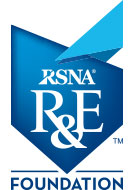Toward More Minimally Invasive Therapy for Mesial Temporal Lobe Epilepsy
R&E Foundation grant used predictive modeling for seizure response to laser ablation


Laser thermal ablation (LTA) is a method of using thermal energy from a laser to perform a localized ablation of an epileptogenic or seizure-inducing focus in the brain. For patients with mesial temporal lobe epilepsy (mTLE), LTA of the mesial temporal structures of the brain is increasingly being used as a safer, less invasive therapy. Previously, surgical resection of the mesial or anterior temporal lobe has been the standard treatment, which is more invasiveand can be less selective in the brain structures targeted, thus carrying risk of more cognitive deficits as side effects.
However, clinical outcomes in patients with mTLE following LTA are currently highly variable, with one-year seizure freedom rates of 40% to 50%. It is unclear what factors influence the rate of response to LTA and what can be done to increase the likelihood of success.
While mTLE is the most common type of focal or partial epilepsy that originates from specific regions of the brain, seizure activity and propagation often occurs through a network consisting of several brain structures, making anatomically targeted therapy suboptimal. There is a need for an easily accessible mathematical framework to help predict response to LTA in individual patients based on their seizure network phenotype to identify patients who are likely to benefit from LTA.
“Seizure reduction in mTLE with targeted therapies has been challenging due to difficulty with precise localization and targeting of the seizure focus, which can be a region or interconnected regions across the brain,” said Ai Phuong S. Tong, fourth year medical student at the University of Washington School of Medicine in Seattle. “Distinguishing patients with a seizure focus in mTLE who can benefit from targeted therapies from patients with multiple foci who would benefit less remains limited to the methods we have to measure where and when seizures start.”
For her 2019 RSNA R&E Foundation Research Medical Student Grant research, “Radiomic Analysis of Diffusion Tensor Imaging to Predict Unfavorable Seizure Outcome One Year After Laser Thermal Ablation for Mesial Temporal Lobe Epilepsy,” Tong and her colleagues sought to measure neural networks and map the white matter tracts involved in seizure propagation using diffusion tensor imaging (DTI). The use of predictive modeling with DTI assessment of global and regional neural connectivity in individual seizure patients has the potential stratify patient connectivity patterns by predicted outcome in response to LTA.
Examining and Mapping The Connectivity of Brain Regions
Knowing that abnormally high and complex neural connectivity can facilitate seizure propagation and underlie why seizures are refractory to medical treatment, Tong and her colleagues decided to map the brain to reflect the white matter networks through which seizures can propagate.
Tong and her colleagues performed a retrospective study to examine diffusion tensor imaging and MR thermography data in a multi-institutional cohort of 28 patients with mTLE who received LTA between 2017 and 2018.
DTI and tractography allowed mapping of white matter tracts as well as anatomical and structural features of the tracts between brain regions. MR thermography was used to estimate and visualize the areas that were ablated. A commercially available software platform used an algorithm to estimate the dissipation of thermal energy based on the laser parameters and the properties of the tissue surrounding the laser. With their development of neural network maps and methods for modeling ablations, the research team could not only gather insight about what ablation targets are associated with seizure reduction, but also created a tool to help model and predict the impact of ablations in future patients.
“To more effectively reduce mTLE seizures with laser thermal ablation, physicians can simulate ablations on each individual patient’s preoperative DTI and generate a probabilistic map for the likelihood of achieving seizure freedom with ablation. In this way, physicians can plan a trajectory for ablation that optimizes outcomes,” Tong said. “With more data we can construct a probability distribution that is more representative of the population to provide more accurate predictions.”
Study Highlights Therapeutic Value of Targeting Specific Neural Connections
Tong and team noted several additional findings from the research.
While most prior studies have emphasized the importance of targeting specific structures in the mesial temporal lobe, this study characterized the importance of targeting specific connections, according to Tong.
“Outcome prediction was significantly better when using connection strength compared to node-based features,” Tong said. “The involved connections are primarily local to the ablation volume with reductions in connection strength being positively associated with seizure freedom.”
Simulations of ablations expanded in a more medial, anterior and inferior direction have more seizure-free predictions. Ablations expanded in this anatomic pattern were noted to disruptconnections with the entorhinal cortex, an area of the brain whose functions include being a widespread network hub for memory andnavigation and perception of time, suggesting that decreasing these specific entorhinal cortex connections is favorable for seizure reduction.
“Lastly, we found that changes in structural connectivity of mesial temporal lobe structures after laser thermal ablation are predictive of seizure freedom at one year with an accuracy of nearly 90%,” Tong said. “Seizure-free outcomes were Engel Class I at one year, which is defined as completely seizure-free since surgery.” This validates the clinical utility of this modeling and optimization of the predicted structural connectivity changes with laser thermal ablation in individual patients.
For Tong, the R&E Foundation grant provided funding at a crucial point in the research.
“The grant provided funding that was used toward resources for the review, processing and analysis of DTI data,” Tong said. “The grant supported additional training in computational techniques to explore different approaches for the mathematical framework, which is modified from approaches used in previously published literature.”
For More Information
Learn more about R&E Foundation grants at RSNA.org/Research/Funding-Opportunities.
Read previous RSNA News stories about R&E Foundation grants: